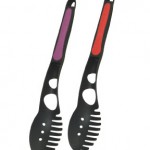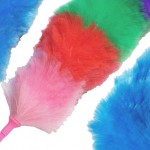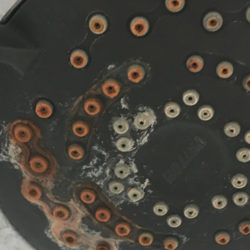Here is a great how-to article about hanging a shelf, and maybe even making your own. This informative and easy to follow article makes it easier than ever to hang a shelf or any other similar decoration. If you have ever attempted this, then you know it can be one of the most frustrating experiences ever. Misplaced screw holes, slanted shelves, finding studs, and more can be overwhelming if you don’t have a good plan beforehand. Follow these simple instructions to ensure that your next shelf hanging endeavor is successful and pain-free.
Step By Step Instructions
Hanging a shelf is a relatively straightforward process that requires some basic tools and attention to detail. Here’s a step-by-step guide on how to hang a shelf:
1. Gather Your Materials:
- Shelf
- Shelf brackets
- Screws
- Wall anchors (if needed)
- Level
- Pencil
- Drill
- Screwdriver or screw gun
2. Choose the Location:
Decide where you want to hang the shelf. Use a stud finder to locate wall studs, as shelves are sturdiest when attached to studs. If you can’t find studs in the desired location, you may need to use wall anchors for added support.
3. Mark the Placement:
Use a pencil to mark the desired placement of the shelf brackets on the wall. Use a level to ensure the brackets will be straight and evenly spaced.
4. Install the Brackets:
If you’re attaching the shelf to wall studs, align the brackets with the stud locations and drill pilot holes through the screw holes in the brackets and into the studs. Then, use screws to secure the brackets to the wall. If you’re using wall anchors, drill pilot holes for the anchors and then insert the anchors into the holes. Attach the brackets to the wall using screws, making sure they’re securely anchored.
5. Attach the Shelf:
Once the brackets are securely installed, place the shelf on top of the brackets. Make sure the shelf is centered and aligned evenly with the brackets.
6. Secure the Shelf:
Use screws to attach the shelf to the brackets. Depending on the design of the shelf, there may be pre-drilled holes for this purpose. If not, you can drill pilot holes through the bottom of the shelf into the brackets and then insert screws to secure it.
7. Check for Level:
Use a level to ensure the shelf is straight and level. Adjust the placement of the shelf if necessary.
8. Test the Stability:
Once the shelf is securely attached, gently test its stability by placing some lightweight items on it. Make any necessary adjustments to ensure it’s properly supported.
9. Enjoy Your New Shelf:
Once everything is in place and secure, you can start using your new shelf to display decor, store items, or whatever else you have in mind.
By following these steps, you can successfully hang a shelf and enhance both the functionality and aesthetics of your space.
Store-Bought Vs. Homemade
When it comes to shelves for your home, you have two primary options: store-bought shelves and homemade shelves. Each option has its own advantages and considerations. Let’s compare store-bought shelves with homemade shelves:
Store-Bought Shelves:
- Convenience: Store-bought shelves are convenient to purchase. You can find them in a variety of styles, sizes, and materials at home improvement stores, furniture stores, and online retailers. They often come with all the necessary hardware for installation.
- Professional Finish: Store-bought shelves are manufactured with precision and often have a polished finish. They may come in uniform sizes and designs, providing a consistent look for your space.
- Ease of Installation: Store-bought shelves typically come with detailed instructions for installation. They are designed to be easy to install, usually requiring basic tools like a drill, screwdriver, and level. Some shelves may even feature innovative mounting systems for hassle-free installation.
- Variety: Store-bought shelves offer a wide range of options to suit different preferences and decor styles. You can choose from floating shelves, wall-mounted shelves, bookshelves, corner shelves, and more. Additionally, you can find shelves made from various materials such as wood, metal, glass, or plastic.
- Cost: The cost of store-bought shelves can vary depending on factors like size, material, and brand. While some options may be budget-friendly, others may be more expensive, especially if they are made from high-quality materials or have intricate designs.
Homemade Shelves:
- Customization: Homemade shelves offer the opportunity for customization. You can tailor the design, size, and finish of the shelves to perfectly fit your space and meet your specific needs. This allows for greater creativity and personalization.
- Cost-Effectiveness: Homemade shelves can be a cost-effective option, especially if you already have materials on hand or repurpose existing items. DIY shelves can often be made using affordable materials like reclaimed wood, plywood, or even repurposed furniture.
- DIY Satisfaction: Building your own shelves can be a rewarding DIY project. It allows you to develop your woodworking skills and unleash your creativity. The sense of accomplishment from creating something with your own hands can be immensely gratifying.
- Flexibility: Homemade shelves offer flexibility in terms of design and functionality. You can experiment with different styles, finishes, and configurations to suit your preferences. Additionally, you can easily modify or adjust homemade shelves over time as your needs change.
- Environmental Impact: Building homemade shelves allows you to reduce waste and minimize your environmental footprint. By repurposing materials or using sustainable resources, you can contribute to a more eco-friendly approach to home decor.
Ultimately, whether you choose store-bought shelves or homemade shelves depends on your preferences, budget, and the specific requirements of your space. Both options offer their own set of benefits, so consider your priorities and needs before making a decision.
How To Make Your Own Shelf
Making your own shelf can be a rewarding DIY project and allows you to customize it to fit your space perfectly. Here’s a step-by-step guide on how to make a basic wall-mounted shelf:
Materials Needed:
- Wood board (pre-cut to desired length and width)
- Shelf brackets (metal or wooden)
- Screws
- Wall anchors (if mounting on drywall)
- Drill
- Screwdriver
- Level
- Sandpaper
- Wood stain or paint (optional)
Step 1: Prepare the Wood Board
- If necessary, sand the edges and surface of the wood board to ensure a smooth finish.
- If desired, apply wood stain or paint to the board and let it dry completely according to the manufacturer’s instructions.
Step 2: Attach the Shelf Brackets
- Determine the placement of the shelf brackets on the wall. Use a level to ensure they are straight.
- Mark the locations for the screws on the wall and drill pilot holes.
- Secure the shelf brackets to the wall using screws and wall anchors if needed.
Step 3: Mount the Wood Board
- Place the wood board on top of the shelf brackets, ensuring it is centered and level.
- Use screws to attach the wood board to the shelf brackets from underneath. Make sure the screws are long enough to securely fasten the board to the brackets.
Step 4: Finishing Touches
- Check the shelf for stability and adjust if necessary.
- If desired, add decorative elements such as trim or molding to the front edge of the shelf.
- Wipe down the shelf to remove any dust or debris.
Step 5: Install the Shelf
- Carefully lift the shelf and place it onto the installed brackets.
- Ensure the shelf is level and securely seated on the brackets.
Step 6: Test the Shelf
- Once installed, test the shelf by placing lightweight items on it to ensure it can support the intended load.
Step 7: Enjoy Your New Shelf
- Your DIY shelf is now ready to use! Arrange your items on the shelf and enjoy the added storage and decor element it provides.
Remember to always follow safety precautions when using power tools and ensure proper anchoring if mounting heavy items or shelving units. With some basic carpentry skills and the right materials, you can create a custom shelf that adds both functionality and style to your space.
For an even easier way to hang shelves, picture frames, mirrors and more, check out He-Man Hooks





 Ordering Info
Ordering Info Customer Service
Customer Service Follow Us
Follow Us Search For Stuff
Search For Stuff Find Us
Find Us Call Us
Call Us Pay Us
Pay Us

0 Comments so far.
Use the form below to add your own thoughts or questions. Scroll down to read what other people had to say.